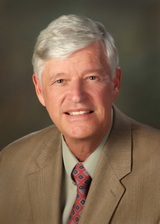
 |
Friday, October 14, 2011 Meeting |
|---|
| Gregory J. Kubas |  |
Los Alamos National Laboratory |
|
“The Remarkable Structure, Bonding, and Reactivity of Metal Dihydrogen Complexes: Inspiration for the Hydrogen Economy” |
|
Date: Friday, October 14, 2011 Location: Northwestern University
2145 Sheridan Road
Evanston, IL 60208
Lecture room 3, 1st floor
Technological InstituteDinner: Northwestern University
Scott Hall – Room 165
Guild Lounge
601 University Place
Evanston, IL 60208
Cost: $35.00 for members of ACS and their guests, $37.00 for non-members, and $20 for students, retired, or unemployedDinner reservations are required and should be received in the Section Office via phone (847-391-9091), email (chicagoacs@ameritech.net), or web by noon on Tuesday, October 11. PLEASE HONOR YOUR RESERVATIONS. The Section must pay for all food orders. No-shows will be billed. Seating will be available for those who wish to attend only the meeting.
Please REGISTER ON LINE
4:30 - 5:30 PM · Basolo Medal Lecture
5:30 - 6:00 PM · Job Club - meets in Scott Hall
6:15 · Reception for Dr. Kubas
7:00 - 8:00 PM · Dinner will be at Scott Hall Guild Lounge, Room 165
8:00 PM · General Meeting at Scott Hall:
- Opening remarks and announcements: Dr. Keith Kostecka,
Chair, Chicago Section American Chemical Society- Presentation of the 2011 Basolo Medal: Dr. Mark Ratner, Chair, Department of Chemistry, Northwestern University
- Acceptance: Dr. Gregory J. Kubas, 2011 Basolo Medalist for Outstanding Research in Inorganic Chemistry
- Closing Remarks: Dr. Keith Kostecka
Abstract: Our discovery nearly 30 years ago of transition metal dihydrogen complexes established that the most fundamental molecule containing the simplest chemical bond, H:H, could unexpectedly be bound in the coordination sphere of a metal. The M–H2 bond involves simultaneous donation and acceptance of electrons between the metal d orbitals and the H–H bonding and antibonding orbitals, analogous to the Dewar-Chatt-Duncanson model for M-olefin π bonding. The side-on coordinated H2 is often reversibly bound and features a remarkable range of dynamic behavior such as equilibrium splitting to hydride ligands and quantum mechanical rotation. Both the electrons and the H nuclei can become highly delocalized in such multicenter bonding, necessitating new paradigms and methodologies for theoretical analysis and understanding reactivity.
Heterolytic as well as homolytic splitting of H–H and related sigma bonds on metal centers are crucial in both industrial and bio catalysis. A major global effort is underway to produce and store hydrogen for fuel applications and dihydrogen coordination chemistry plays a significant role here. Bio-inspired photochemical production of hydrogen based on water splitting is a primary goal that will be discussed here.
Biography: Gregory Kubas received his B.S. from Case Institute of Technology in 1966 and Ph.D. from Northwestern University with Duward Shriver in 1970. He performed postdoctoral studies at Princeton with Tom Spiro and moved on to Los Alamos initially as a postdoc then as a staff member. He became a Laboratory Fellow in 1987 and more recently a Fellow of the American Association for the Advancement of Science. His discovery of metal complexes that bind dihydrogen molecules led to the 1993 American Chemical Society Award in Inorganic Chemistry and the 1994 E.O. Lawrence Award in Chemistry from the Department of Energy. The research on dihydrogen complexes led to new views of chemical bonding and hydrogen activation and opened new fields of chemical research on metal sigma-bond complexes. Greg is author of the 2001 book considered to be the bible of this field, Metal-Dihydrogen and σ-Bond Complexes.
Parking: After 4:00 p.m. parking is available in the lot across from the Technological Institute at the corner of Noyes Street and Sheridan Road. Parking is also available on the side streets just west of this lot; however, observe the posted signs.
Lecture room 3 is on the first floor of the Technological Institute and is most easily reached by entering through the main doors facing Sheridan Road. The lecture room is clearly marked and there will be signs at the entrance to guide you to the room.
Dinner: There is no parking lot adjacent to Scott Hall. Parking is available near Pick-Staiger Concert Hall located on the same side of the street as Tech Institute but nearer the lake. Scott Hall is also a short walk (0.4 miles) south of the Technological Institute.
Dinner:
Scott Hall is located southwest of the Tech Institute. Take Sheridan Road south pass Emerson St. Scott Hall is the building next to Cahn Auditorium. Enter Scott at the south entrance.
| Last updated 10/7/11 Copyright © 2009-2011, Chicago Section, The American Chemical Society |
Webs by Wizardcraft |